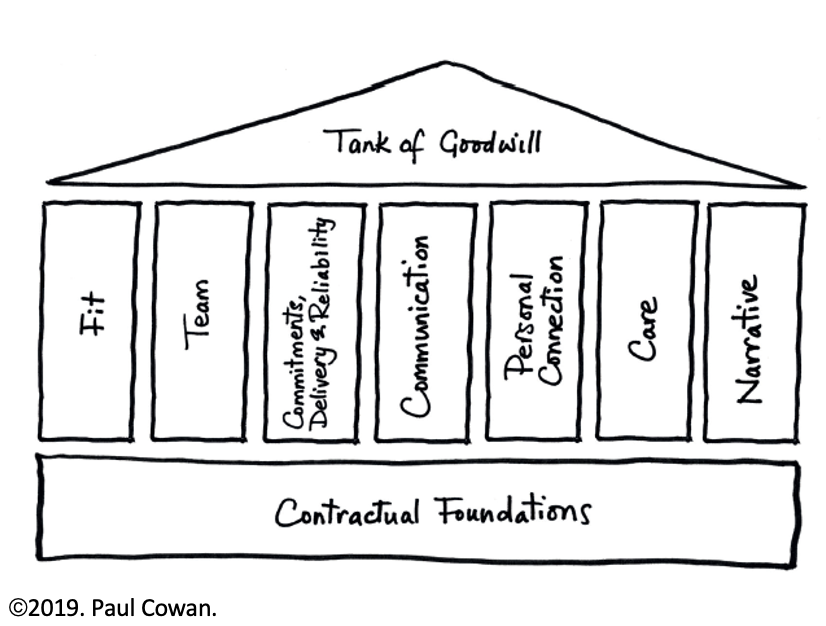Repitching your media account? Think like a doctor

If you are an incumbent agency considering repitching during Mediapalooza, be diagnostic and analytical, advises agency/client relationship consultant Paul Cowan
It appears that Mediapalooza II is upon us. As if the last year hasn’t been stressful enough for clients and agencies, now many incumbent agencies will have to go through the repitch process.
Repitching as an incumbent is always a tough decision, with agencies often feeling that they have no choice but to repitch, but worried that they aren’t on a level playing field – and wondering whether a decision has already been made.
This edition of Mediapalooza is less cost-driven than the original in 2015, which was largely led by procurement teams with an eye on efficiencies of spend and consolidation into agency groups.
While some of the many media pitches this year fit that mould, as Nick Manning mentioned in his recent piece for Mediatel News, many this time around are more nuanced, with clients looking to find agencies that fit their specific needs and omnichannel set up – with team make-up and skills more important than ever.
This means that it’s not a zero-sum game: good client relationships can make the difference in retaining a client.
But how does an incumbent agency find out what their relationship with a client is really like? You could simply ask the team or the client, but we are all socialised from an early age to avoid being open, direct and transparent – “Don’t tell grandpa his breath smells” – so how can you get close to the truth and how to make sense of it?
If you are an incumbent agency considering re-pitching during Mediapalooza, be diagnostic and analytic.
To become diagnostic we can learn from doctors. According to psychologist Robert S Feldman, they are the only professionals who are good at getting to the truth of a matter.
First ask the client about their experience of the agency. If the client is vague and non-committal at this point, you may need to probe further. If you are worried that the client feels negatively, focus on the negatives first: “Tell me how we disappoint you and fail to live up to your expectations.”
Even if you have heard their complaints before, listen for anything you haven’t yet heard or for any subtle changes to explore. Probe for each issue and then find out about the consequences.
“So, we missed the deadline for the presentation. What impact did that have?” Keep probing: “What were the consequences of missing the presentation for the global sales team?”
And then: “Tell me what the impact was on you?”
At this point you’re likely to find the deeper, more powerful emotional consequences and come across other issues. Once all the negatives have been listed, you can then help the client to start reprogramming their feelings.
“Tell me what is good or what you value about the agency.”
Then explore the positive consequences. It is important that the last thing your client hears is them telling you all the good stuff about the agency. In doing so, they likely start to run more positive messages in their mind while you address the problems.
You should be able to walk away from a diagnostic inquiry in about 12 minutes with a priority checklist of what to keep doing, what to stop doing and what to start doing. This will set you up in good stead to decide either what should be covered in any re-pitch, or indeed whether it would be wiser to walk away.
The second stage is to be analytic. One technique for analysing the clients’ comments to understand the state of your relationship and where there may be problems that you can address in a re-pitch is a model called the “The Sound Relationship House”.
The model, pictured below, is holistic, embracing all aspects of a relationship and dynamic in that when one aspect of a relationship changes, it impacts all the others. At the base are the contractual foundations and SLA. At the top is ‘Tank of Goodwill’ – the reserves of goodwill that are vital buffers to the ups and downs of any relationship – adding or draining the reserves of goodwill are seven pillars that delineate the key aspects of any client / agency relationship.

By examining the clients’ comments and your own experience against the relationship pillars you should be able to understand what elements of the relationship work well and others that need attention.
The pillars are the ‘fit’ between client and agency, the client and agency team (it is a two way analysis) – the degree of stability, seniority or experience for the tasks, the degree of consistency of delivering against commitments to each other, the efficacy and adequacy of communication, the degree of personal connection between client and agency individuals and often, most perniciously, the narrative or stories that the client shares internally about the agency and vice versa.
In his article about Mediapalooza II, Nick Manning remarked on the fact that this time round agencies are being far more discerning about what pitches they are taking part in – it would be wise for this selectiveness to extend to incumbent agencies.
Paul Cowan is a former adman, who has taken part in more pitches and repitches than he cares to name. His book, Connecting with Clients, which gives advice on how to forge stronger client relationships, is out now.



